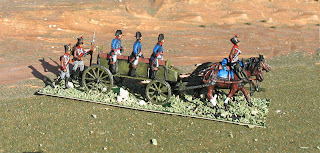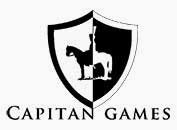Below there is a list of free resources related to the Campaign of Leipzig (1813) that can be downloaded (free!) from the web. Many of the files were found thanks to the services of members of the Napoleon-Series forum, particularly Steven H. Smith, whose dedication to dug in the Google books or Gallica services is invaluable. Other files came from different U.S. Army servers (because the Campaign of Leipzig is a succesful example of coalition warfare) and can be easily downloaded after an exact query in Google.
As for the previous post, all this information is also available at my web site through the Leipzig Project page.
Title La Campagne d'automne de 1813 et les lignes intérieures
Author, year AG, 1897
Source Gallica
Title Précis militaire de la campagne de 1813 en Allemagne
Author, year Brockhaus, F.A., 1881
Source Google books
Title Commentaries on the war in Russia and Germany in 1812 and 1813
Author, year Cathcart, G., 1850
Source Google books
Title Histoire de la guerre de 1813 en Allemagne
Author, year Lt. Colonel Charras, 1866
Source Gallica
Title Old Maps
Author, year DigAM digitales archiv marburg
Source http://www.digam.net/?str=177
Title Narrative of the war in Germany and France in 1813 and 1814
Author, year Vane, C.W. Marquess of Londonderry, 1830
Source Google Books / Microsoft
Title Etude sur les operations du Maréchal Macdonald (du 22 août au 4 septembre 1813. La Katzbach)
Author, year X, 1910
Source Gallica
Title Bautzen. Une bataille de deux jours
Author, year Foucart, 1897
Source Gallica
Title Failure in independent tactical command: Napoleon's Marshalls in 1813
Author, year Keefe, J.M., 1994
Source U.S. Army Command and General Staff College
Title Coalition tactics on the Napoleonic battlefield and their influences on unity of effort
Author, year Kuehn, J. Trost , 1997
Source U.S. Army Command and General Staff College
Title Operational Art and the 1813 campaign in Germany
Author, year Kuehn, J. Trost, 1998
Source U.S. Army Command and General Staff College
Title The reasons for the success of the sixth Coalition against Napoleon on 1813
Author, year Kuehn, J. Trost, 1998
Source U.S. Army Command and General Staff College
Title An analysis in coalition warfare: Napoleon's defeat at the battle of Nations-Leipzig 1813
Author, year Leavelle, C.M., 1998
Source USAWC Strategy Research Project
Title Passages from my life together with Memoirs of the Campaign of 1813 and 1814
Author, year Müffling, 1853
Source Google books
Title Napoleon's last campaign in Germany
Author, year Petre, F.L., 1912
Source Google books
Title Napoleon's Cavalry: A key element to decisive victory
Author, year Shoeffner,T.A., 2002
Source U.S. Army Command and General Staff College
Title Memories of Marshall Oudinot
Author, year Stiegler, G., 1896
Source Google books
Title Complexity in coalition warfare. The Campaign of the Sisth coalition against Napoleon
Author, year Turner, K.A., 2003
Source USAWC Strategy Research Project
Title Service of Atoine-Henri Baron de Jomini in 1812-13: A new retrospective view
Author, year Vovsi, E.V. , 2006
Source The Florida State University
Title Relation der Jriegserignisse von 22 bis 30 August 1813 bei Dresden und Kulm
Author, year X, 1823?
Source Google books
Title Campagne de 1813. La Cavalerie des Armées Alliés
Author, year Weil, M.H., 1886
Source Google books








































